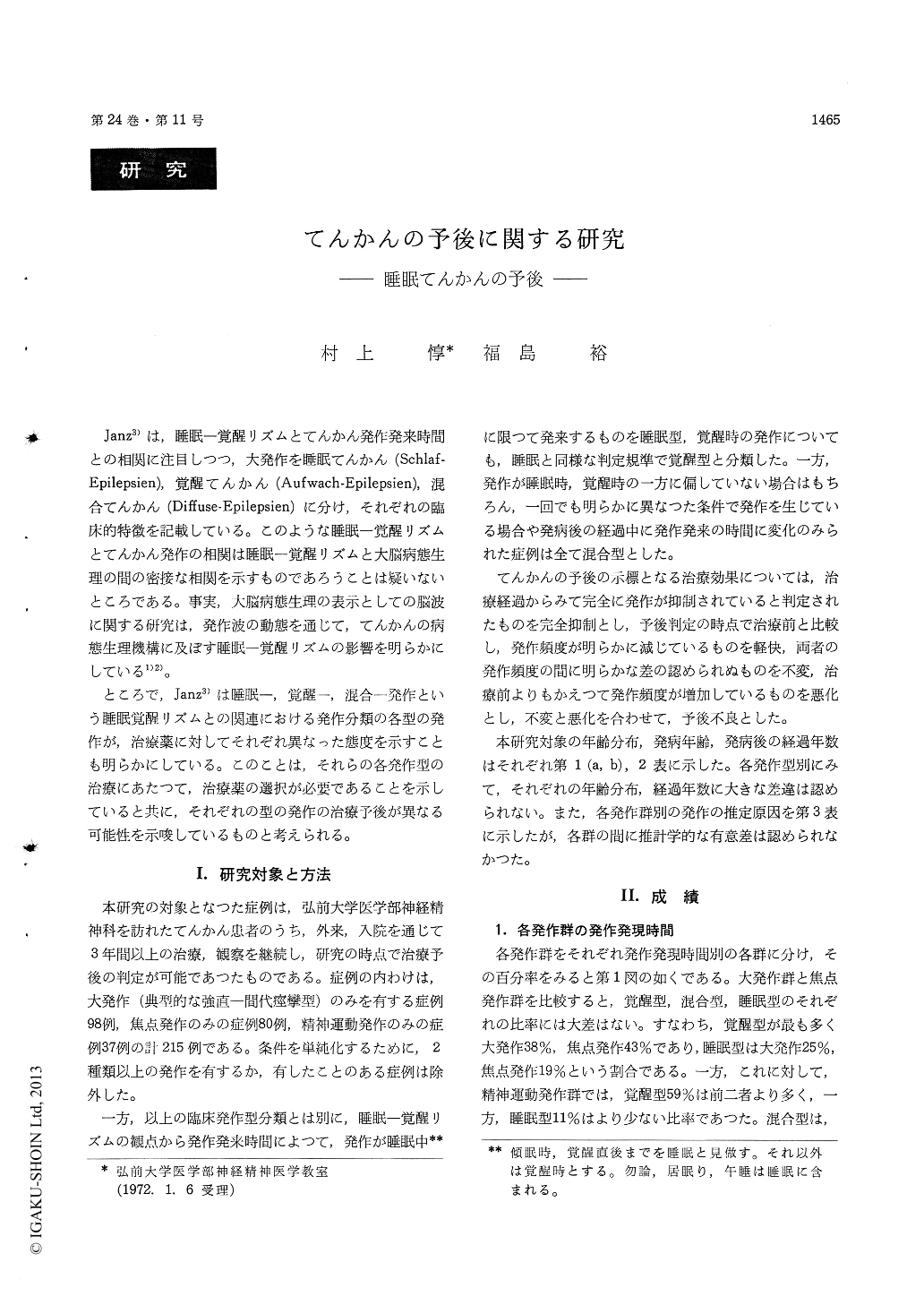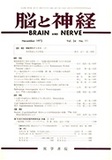Japanese
English
- 有料閲覧
- Abstract 文献概要
- 1ページ目 Look Inside
Janz3)は,睡眠—覚醒リズムとてんかん発作発来時間との相関に注目しつつ,大発作を睡眠てんかん(Schlaf—Epilepsien),覚醒てんかん(Aufwach-Epilepsien),混合てんかん(Diffse-Epilepsien)に分け,それぞれの臨床的特徴を記載している。このような睡眠—覚醒リズムとてんかん発作の相関は睡眠—覚醒リズムと大脳病態生理の間の密接な相関を示すものであろうことは疑いないところである。事実,大脳病態生理の表示としての脳波に関する研究は,発作波の動態を通じて,てんかんの病態生理機構に及ぼす睡眠—覚醒リズムの影響を明らかにしている1)2)。
ところで,Janz3)は睡眠—,覚醒—,混合—発作という睡眠覚醒リズムとの関連における発作分類の各型の発作が,治療薬に対してそれぞれ異なった態度を示すことも明らかにしている。このことは,それらの各発作型の治療にあたつて,治療薬の選択が必要であることを示していると共に,それぞれの型の発作の治療予後が異なる可能性を示唆しているものと考えられる。
The authors studied on the relationship between prognosis of seizure control and occurrance of attacks in regard to the sleep-waking cycle. From the view point of the cycle, the epilepsies were classified into three groups, according to Janz: epilepsies on awaking, sleep epilepsies and diffuse epilepsies.
The subjects of this study are 215 epileptics, consisting of 98 cases of typical tonic-clonic grand mal, 80 of focal seizures and 37 of psychomotor. Seizure types are all single (not combined) and their clinical courses were observed for over 3 years by the authors.
The result obtained shows that the sleep epilep-sies have a good prognosis in all of three types of epilepsy; that is, epileptics whose attacks are com-pletely controlled, are seen more in the sleep epilepsies than in the others. This tendency is prominent in the grand mal types.

Copyright © 1972, Igaku-Shoin Ltd. All rights reserved.


